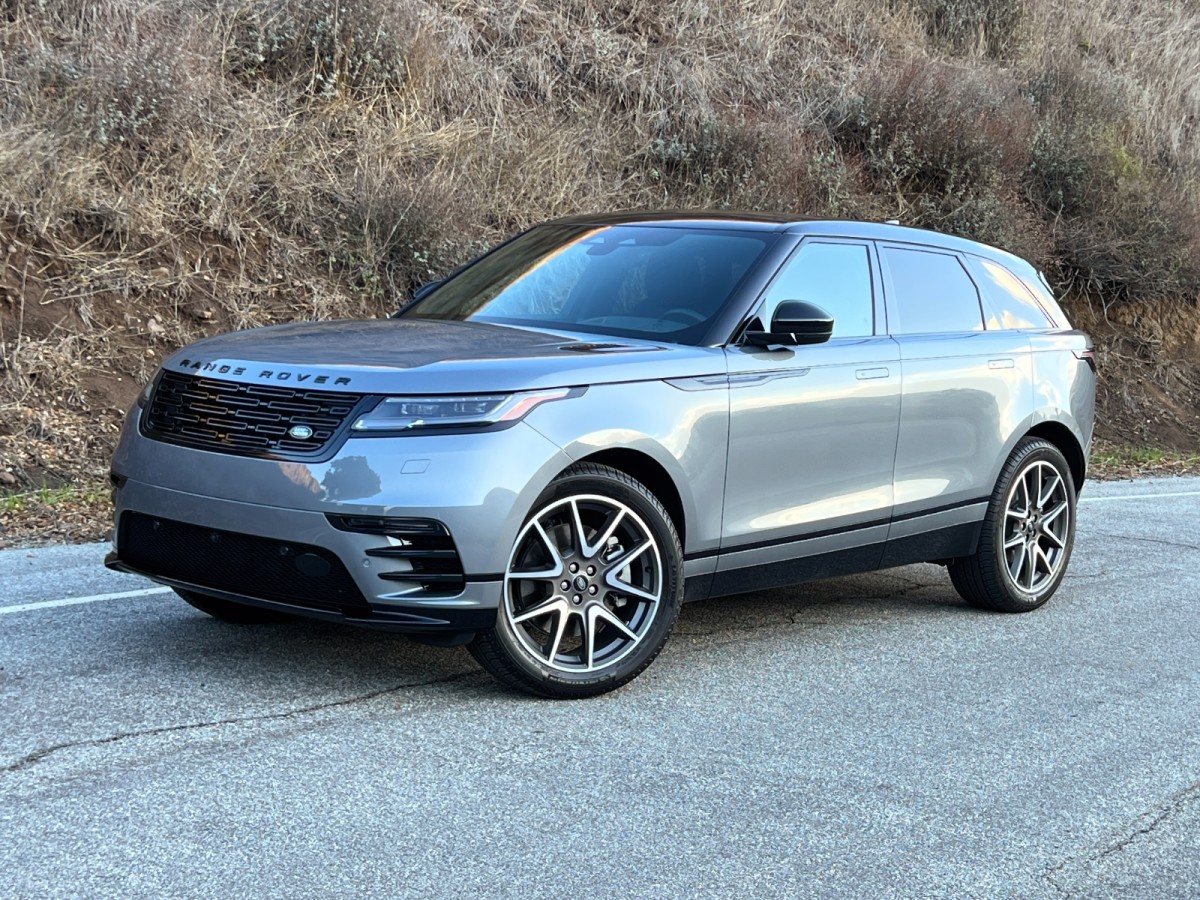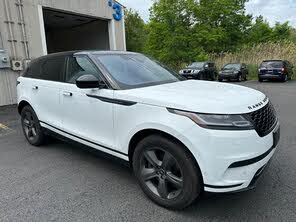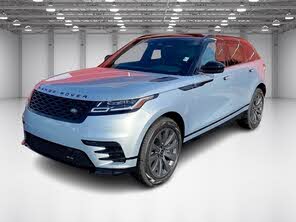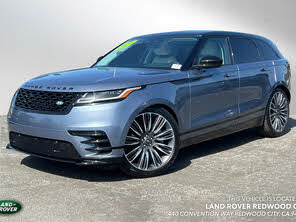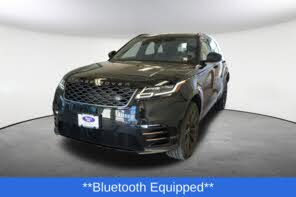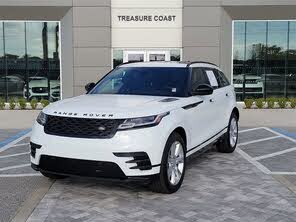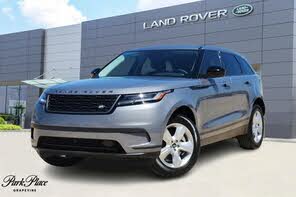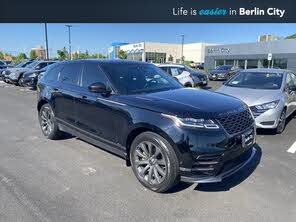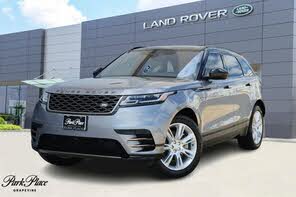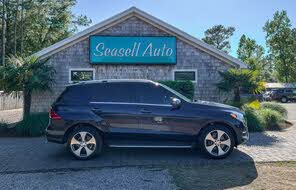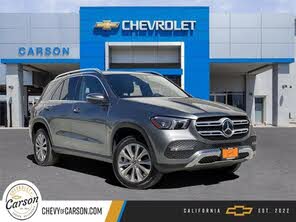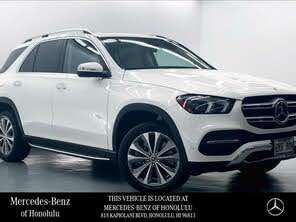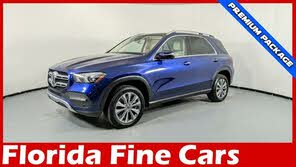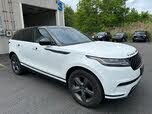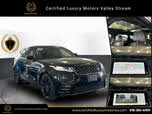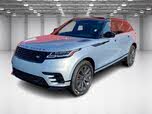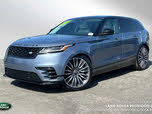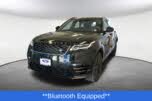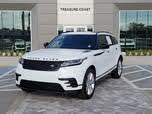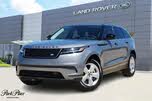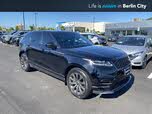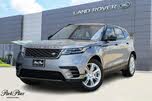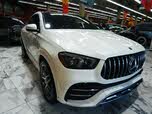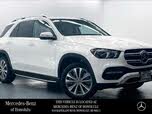Mercedes-Benz GLE vs Land Rover Range Rover Velar
CarGurus highlights
According to CarGurus experts, the overall rating for the 2024 Mercedes-Benz GLE-Class was 8.0 out of 10, while the 2024 Land Rover Range Rover Velar scored 6.3 out of 10. Despite the Velar’s appeal for modern design and robust off-road capabilities, the GLE-Class ultimately offered a more comprehensive package of luxury, technology, performance, and safety. Therefore, our recommendation leans toward the 2024 Mercedes-Benz GLE-Class, ensuring a more satisfying driving experience and value for prospective buyers.
Choose the 2024 Land Rover Range Rover Velar if:
Shop Now- You prefer a modern, minimalist design both inside and out, with high-quality materials and a sleek aesthetic.
- You’re looking for an SUV with robust off-road capabilities paired with dynamic on-road performance.
- You value advanced infotainment and connectivity features, including Pivi Pro with over-the-air updates and Amazon Alexa compatibility.
Choose the 2024 Mercedes-Benz GLE if:
Shop Now- You prefer a modern, minimalist design both inside and out, with high-quality materials and a sleek aesthetic.
- You’re looking for an SUV with robust off-road capabilities paired with dynamic on-road performance.
- You value advanced infotainment and connectivity features, including Pivi Pro with over-the-air updates and Amazon Alexa compatibility.
Overview | |
MSRP$62,650 | MSRP$61,500 |
Average price$48,564 | Average price$39,939 |
Listings9450 | Listings2897 |
Ratings & Reviews | |
User Reviews | User Reviews |
Expert reviews8.0 out of 10 | Expert reviews6.3 out of 10 |
Pros
| Pros
|
Reviews SummaryThis midsize Mercedes SUV gets a facelift for 2024 that includes an upgraded interior and infotainment system as well as some new styling cues. Mercedes’ 4matic all-wheel drive system is standard across the lineup, as is seating for five, though a small third row is an option. Models include the GLE 350, GLE 450, and GLE 580, all with a 48-volt mild-hybrid system. Also on tap are the AMG GLE 53 and AMG GLE 63 S. However, new for this year, and the primary tester for this review, is the GLE 450e with a plug-in hybrid powertrain. Verdict: A new plug-in hybrid powertrain helps the GLE hit a sweet spot between performance and efficiency. Elsewhere, this is classic Mercedes: big and beautiful with plenty of luxury touches and great space. These aren’t inexpensive SUVs, but then again, Mercedes is one of the principal faces of the pricey luxury market. | |
Reviews SummaryA luxury SUV with seating for five people, the 2024 Velar is one of four SUVs to wear Range Rover lettering across the leading edge of its hood. It slots into the lineup between the smaller Evoque and more capable Sport. This model year, the Velar receives several updates. They include design and comfort enhancements and several improvements to the standard infotainment system. Verdict: The changes to the 2024 Range Rover Velar result in an appealing, if flawed, alternative to the best-sellers in the segment, such as the BMW X5 and Mercedes-Benz GLE-Class. If the Velar had more natural and less frustrating technology, it could raise its profile in the midsize luxury SUV segment considerably. | |
No video found | No video found |
Popular Features & Specs | |
Engine2.0L 255 hp I4 | Engine2.0L 247 hp I4 |
Drive TrainAWD | Drive TrainAWD |
Seating Capacity7 | Seating Capacity5 |
Horsepower255 hp @ 5800 rpm | Horsepower247 hp @ 5000 rpm |
MPG City20 | MPG City22 |
MPG Highway27 | MPG Highway26 |
Engine | |
Engine Name2.0L 255 hp I4 | Engine Name2.0L 247 hp I4 |
Torque295 lb-ft @ 1800 rpm | Torque269 lb-ft @ 1300 rpm |
Horsepower255 hp @ 5800 rpm | Horsepower247 hp @ 5000 rpm |
DrivetrainAWD | DrivetrainAWD |
Fuel Economy | |
MPG City20 | MPG City22 |
MPG Highway27 | MPG Highway26 |
Interior | |
Leather Seats | Leather SeatsStandard |
Seating Capacity7 | Seating Capacity5 |
Key Features | |
Navigation SystemStandard | Navigation SystemStandard |
Sunroof/MoonroofStandard | Sunroof/MoonroofStandard |
Safety | |
Side Crash Overall5 | Side Crash Overall |
Dimensions & Capacity | |
Cargo Space33.3 cu ft | Cargo Space30.9 cu ft |
Curb Weight4916 lbs | Curb Weight4130 lbs |
Height70.8 in | Height66.3 in |
Length193.9 in | Length188.9 in |
Width84.9 in | Width84.5 in |
Wheelbase117.9 in | Wheelbase113.0 in |
Maximum Payload1455 lbs | Maximum Payload1490 lbs |
Number of doors4 | Number of doors4 |
Maximum Towing Capacity7700 lbs | Maximum Towing Capacity5291 lbs |
CarGurus highlights
According to CarGurus experts, the overall rating for the 2024 Mercedes-Benz GLE-Class was 8.0 out of 10, while the 2024 Land Rover Range Rover Velar scored 6.3 out of 10. Despite the Velar’s appeal for modern design and robust off-road capabilities, the GLE-Class ultimately offered a more comprehensive package of luxury, technology, performance, and safety. Therefore, our recommendation leans toward the 2024 Mercedes-Benz GLE-Class, ensuring a more satisfying driving experience and value for prospective buyers.
Choose the 2024 Land Rover Range Rover Velar if:
Shop Now- You prefer a modern, minimalist design both inside and out, with high-quality materials and a sleek aesthetic.
- You’re looking for an SUV with robust off-road capabilities paired with dynamic on-road performance.
- You value advanced infotainment and connectivity features, including Pivi Pro with over-the-air updates and Amazon Alexa compatibility.
Choose the 2024 Mercedes-Benz GLE if:
Shop Now- You prefer a modern, minimalist design both inside and out, with high-quality materials and a sleek aesthetic.
- You’re looking for an SUV with robust off-road capabilities paired with dynamic on-road performance.
- You value advanced infotainment and connectivity features, including Pivi Pro with over-the-air updates and Amazon Alexa compatibility.
Overview | ||
MSRP | $62,650 | $61,500 |
Average price | $48,564 | $39,939 |
Listings | ||
Ratings & Reviews | ||
User reviews | 4.7 | 4.4 |
Expert reviews | 8.0 out of 10Read full review | 6.3 out of 10Read full review |
Pros & cons | Pros
| Pros
|
Summary | This midsize Mercedes SUV gets a facelift for 2024 that includes an upgraded interior and infotainment system as well as some new styling cues. Mercedes’ 4matic all-wheel drive system is standard across the lineup, as is seating for five, though a small third row is an option. Models include the GLE 350, GLE 450, and GLE 580, all with a 48-volt mild-hybrid system. Also on tap are the AMG GLE 53 and AMG GLE 63 S. However, new for this year, and the primary tester for this review, is the GLE 450e with a plug-in hybrid powertrain. Verdict: A new plug-in hybrid powertrain helps the GLE hit a sweet spot between performance and efficiency. Elsewhere, this is classic Mercedes: big and beautiful with plenty of luxury touches and great space. These aren’t inexpensive SUVs, but then again, Mercedes is one of the principal faces of the pricey luxury market. | A luxury SUV with seating for five people, the 2024 Velar is one of four SUVs to wear Range Rover lettering across the leading edge of its hood. It slots into the lineup between the smaller Evoque and more capable Sport. This model year, the Velar receives several updates. They include design and comfort enhancements and several improvements to the standard infotainment system. Verdict: The changes to the 2024 Range Rover Velar result in an appealing, if flawed, alternative to the best-sellers in the segment, such as the BMW X5 and Mercedes-Benz GLE-Class. If the Velar had more natural and less frustrating technology, it could raise its profile in the midsize luxury SUV segment considerably. |
Video | No video found | No video found |
Popular Features & Specs | ||
Engine | 2.0L 255 hp I4 | 2.0L 247 hp I4 |
Drive Train | AWD | AWD |
Seating Capacity | 7 | 5 |
Horsepower | 255 hp @ 5800 rpm | 247 hp @ 5000 rpm |
MPG City | 20 | 22 |
MPG Highway | 27 | 26 |
Engine | ||
Engine Name | 2.0L 255 hp I4 | 2.0L 247 hp I4 |
Torque | 295 lb-ft @ 1800 rpm | 269 lb-ft @ 1300 rpm |
Horsepower | 255 hp @ 5800 rpm | 247 hp @ 5000 rpm |
Drivetrain | AWD | AWD |
Fuel Economy | ||
MPG City | 20 | 22 |
MPG Highway | 27 | 26 |
Interior | ||
Leather Seats | Standard | |
Seating Capacity | 7 | 5 |
Key Features | ||
Navigation System | Standard | Standard |
Sunroof/Moonroof | Standard | Standard |
Safety | ||
Side Crash Overall | 5 | |
Dimensions & Capacity | ||
Cargo Space | 33.3 cu ft | 30.9 cu ft |
Curb Weight | 4916 lbs | 4130 lbs |
Height | 70.8 in | 66.3 in |
Length | 193.9 in | 188.9 in |
Width | 84.9 in | 84.5 in |
Wheelbase | 117.9 in | 113.0 in |
Maximum Payload | 1455 lbs | 1490 lbs |
Number of doors | 4 | 4 |
Maximum Towing Capacity | 7700 lbs | 5291 lbs |

By: CarGurus + AI
This car comparison has been created with using generative AI. It is based entirely on CarGurus expert review content, ratings and data, and leverages our extensive library of hands-on product tests to create thousands of unique comparisons to help shoppers choose the right car.

